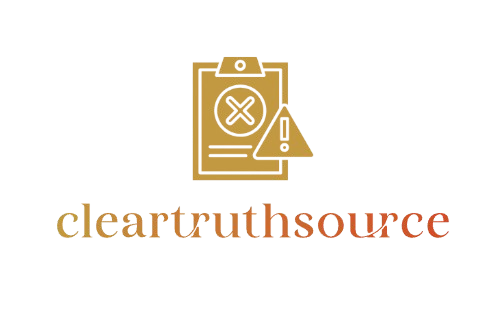In a world buzzing with opinions, public opinion research is like a crystal ball revealing what people really think. Ever wonder why some political campaigns flop while others soar? It’s all about understanding the pulse of the people. With the right data, it’s possible to turn a whisper into a roar or a shrug into a standing ovation.
Public opinion research isn’t just for politicians and marketers; it’s a treasure trove for anyone wanting to make informed decisions. From social issues to consumer trends, knowing what people care about can save time, money, and maybe even a few awkward conversations. So, buckle up as we dive into the fascinating world of public opinion research, where numbers meet narratives and insights can spark change.
Public Opinion Research
Public opinion research involves systematically gathering insights about the attitudes and beliefs of individuals within a specific population. Surveys, polls, and focus groups serve as methods to collect this data, aiming to evaluate how people feel about diverse topics. Researchers analyze the results to identify trends, gauge public sentiment, and understand underlying factors influencing opinions.
Quantitative data collection focuses on numerical values, while qualitative methods delve into deeper insights. Both approaches provide valuable information that shapes strategies for political campaigns, marketing initiatives, and social policies. Using public opinion research, stakeholders can track shifts in perspectives over time, enabling timely responses to changes in sentiment.
Understanding demographic segments proves essential in public opinion research. Age, location, and socioeconomic status can all influence opinions, offering critical context for analysis. Tailoring questions according to these factors enhances the relevance and accuracy of research findings, ensuring that outcomes genuinely represent the broader population.
Public opinion research also drives engagement by connecting data with storytelling. Marketers and politicians can create narratives that resonate with audiences based on research insights. Effective communication of findings fosters trust and enhances credibility among constituents or customers.
Ultimately, public opinion research empowers informed decision-making. By grasping the pulse of society, organizations can respond effectively to the needs and concerns of the public. The intersection of data and storytelling remains a potent tool for driving meaningful change.
Methodologies in Public Opinion Research

Public opinion research employs various methodologies to capture the sentiments of the population efficiently. These methodologies include quantitative and qualitative methods, each serving distinct purposes in data collection and analysis.
Quantitative Methods
Quantitative methods focus on numerical data collection, facilitating statistical analysis. Surveys and polls comprise common tools in this approach, often using closed-ended questions for streamlined responses. Researchers typically gather responses from large sample sizes to ensure statistical significance, allowing for generalization of results to the broader population. Data obtained through quantitative methods aids in identifying trends, measuring intensity of opinions, and estimating likelihoods associated with attitudes. The precision offered by numerical data enhances the reliability of findings, making quantitative insights essential in shaping political campaigns and marketing strategies.
Qualitative Methods
Qualitative methods delve into the deeper motivations behind public attitudes. Techniques such as interviews, focus groups, and open-ended surveys capture more nuanced perspectives. Researchers engage with smaller groups to explore individual sentiments, providing rich contextual information beyond mere numbers. Emotional resonance shines through qualitative data, revealing the why behind the what in public opinion. Analyzing this information illuminates values, beliefs, and social influences that shape opinions. Qualitative insights augment quantitative findings by providing depth, enhancing the overall understanding of public sentiment and guiding effective communication strategies.
Importance of Public Opinion Research
Public opinion research plays a critical role in shaping decisions across various fields. It provides insights that influence policies and political campaigns, ensuring that organizations stay connected to the needs of their audiences.
Impact on Policy Making
Policy makers heavily rely on public opinion research to guide their decisions. This research identifies the values and concerns of constituents, allowing for policies that resonate with the public. By analyzing data, legislators can anticipate reactions to potential initiatives. Using insights from studies, they craft legislation that addresses pressing issues. Effective policies emerge only when public sentiment drives the decision-making process.
Influence on Elections
Elections hinge on understanding voter preferences. Public opinion research delivers vital information on candidate perceptions, key issues, and potential voter turnout. Polls assess which topics engage voters and which candidates appeal to them. Integrating these insights helps campaigns hone their strategies. By understanding public sentiment, candidates can tailor their messages to resonate better with diverse voter demographics, ultimately impacting the election outcome.
Challenges in Public Opinion Research
Public opinion research faces various challenges that can impact the accuracy and effectiveness of its findings. Addressing these issues requires careful consideration of methodologies and analysis.
Sampling Issues
Sampling presents a significant hurdle in public opinion research. Representing the target population accurately ensures that research reflects the true attitudes and beliefs of that group. Non-representative samples can skew results, limiting generalizability. Factors like demographic diversity, geographic coverage, and sample size influence outcomes. Using stratified sampling techniques can enhance representation by ensuring all segments are included. Researchers must continually refine their sampling methods to mitigate potential biases and improve data reliability.
Interpretation of Data
Interpreting data from public opinion research entails navigating complexities that can lead to misconceptions. Analysts face the task of distinguishing between correlation and causation, particularly with multifaceted data sets. Misinterpretation can arise from overlooking context or not considering external factors that influence opinions. It’s crucial to apply statistical techniques properly while communicating findings in a clear and accessible manner. Engaging with stakeholders helps clarify the implications of the data, fostering a deeper understanding of public sentiment and enhancing the decision-making process.
Future Trends in Public Opinion Research
Data analytics continues to evolve, significantly impacting public opinion research methodologies. Advances in artificial intelligence enhance the accuracy of survey predictions and sentiment analysis. Researchers increasingly rely on machine learning algorithms to process vast amounts of qualitative and quantitative data efficiently.
Mobile technology plays a pivotal role in shaping future research strategies. The widespread use of smartphones facilitates real-time data collection through apps and social media platforms. As users engage online, researchers capture immediate feedback and trends that traditional methods might miss.
Virtual reality opens new avenues for understanding complex public sentiments. This immersive technology allows groups to interact in simulated environments, unveiling deeper insights into opinions and behaviors. By employing virtual focus groups, researchers gain richer contextual information, stimulating more engaging discussions and responses.
Ethical considerations will drive the evolution of public opinion research. Stronger regulations on data privacy require researchers to prioritize transparency and participant consent. Public trust hinges on responsible data usage, encouraging researchers to establish clear guidelines for ethical practices.
Finally, the integration of diverse demographic data enhances the richness of insights obtained from opinion research. Researchers increasingly segment audiences through cultural, economic, and geographic lenses. This tailored approach leads to nuanced understandings of attitudes, aligning strategies in marketing and policy-making with specific population needs.

